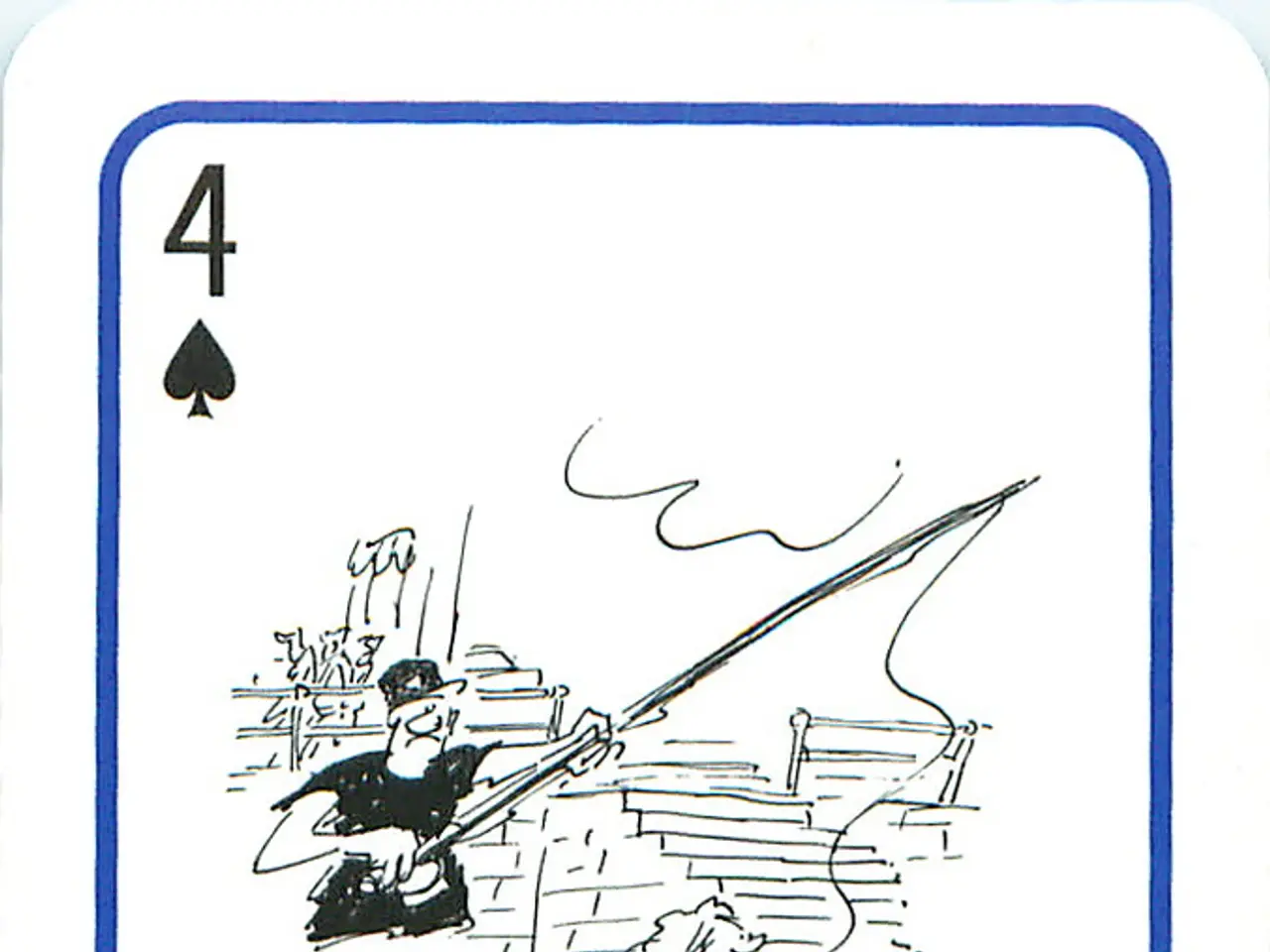Historic Playing Cards and Their Substantial Impact on Contemporary Card Games
Playing cards, a set of rectangular cards used for games, magic tricks, and gambling, have a rich and fascinating history that spans over a thousand years.
The origins of playing cards can be traced back to ancient China during the Tang dynasty around the 9th century, influenced by woodblock printing technology. Early Chinese cards often featured popular folklore and story characters. From China, playing cards spread westward, reaching the Islamic world—specifically the Mamluk Sultanate in Egypt—where a distinct style developed.
The next major step in their history was the introduction of playing cards into Europe by the late 14th century. The earliest European references appear around the 1370s, including mentions in Spain (Catalonia) and Italy with bans on cards being recorded, reflecting concerns about gambling and social behavior. Early European decks evolved into the suits we recognize today—hearts, spades, diamonds, and clubs—derived from traditional Italian and Spanish suits.
One significant innovation in European card games was the development of tarot cards in Italy around 1420, which added a separate set of trump cards leading to complex trick-taking games. Tarot card games influenced many subsequent games by introducing permanent trump suits and the idea of bidding, innovations still foundational in modern card games.
Across the centuries, card games proliferated and diversified, impacting social and cultural life. For example, the game Solitaire arose in Europe by the late 18th century, initially associated with fortune-telling and aristocratic culture before becoming popular worldwide through digital platforms.
Today, playing cards continue to evolve, influencing modern gaming culture deeply. They provide the basis for countless classic and contemporary card games, ranging from casual party games to strategic competitions like bridge and poker. They shape cultural symbolism and artistic expression, especially through tarot and illustrated decks.
Moreover, playing cards have transitioned into digital gaming and apps, broadening accessibility and engagement with card-based games. Games like KeyForge and Unlock! showcase how physical card decks can incorporate QR codes, augmented reality (AR), or companion apps to add interactive elements and evolving narratives.
Modern deck-building games like Dominion and Star Realms are also rooted in the principles behind traditional playing cards. Magic: The Gathering draws from classic card deck principles, using color-based suits similar to the traditional four-suit system.
As the gaming industry embraces eco-conscious design, playing card manufacturers are moving toward sustainable materials, recycled paper decks, and minimalistic packaging to reduce environmental impact. Blockchain-based NFT card collections introduce unique, tradable digital decks that bring new ownership dynamics to the gaming world.
Innovative games like Gloomhaven and the Spheres of Life card game continue to push the boundaries of traditional playing cards, incorporating deck-driven mechanics and customized suits or icons that match the game's world.
In conclusion, the origin of playing cards in ancient China, their transmission through the Islamic world to Europe, and the subsequent evolution of design and game mechanics have profoundly shaped modern card games and gaming culture globally.
- Cooking and playing cards share a common history, as both have roots tracing back to ancient China.
- The lifestyle of those in the Tang dynasty may have included games of chance, as playing cards originated during this time.
- Fashion-and-beauty enthusiasts can find inspiration in the rich storytelling found on early Chinese playing cards.
- Food-and-drink aficionados might appreciate the symbolic representation of various dishes in global cuisines through playing cards.
- Casual gatherings can be enhanced with recipes that incorporate themes from popular casino games on playing cards.
- Knowledgeable collectors seek out rare, antique decks of playing cards for their extensive historical and artistic value.
- One can learn about ancient technology by studying the evolution of printing methods, especially in relation to the development of playing cards.
- Smartphones and technology have revolutionized the way people play classic card games, offering digital versions with innovative features.
- Books on playing cards provide engaging reads, delving into the history, symbolism, and game mechanics of these fascinating artifacts.
- Playing cards, casino-and-gambling paraphernalia, and sports betting all share an intimate connection to the world of entertainment.
- The exciting world of poker is just one popular casino-game that finds its roots in traditional European playing cards.
- Sports enthusiasts can engage with card games featuring their favorite teams and players, such as football, basketball, baseball, hockey, and golf.
- Participating in sports-betting, while not directly related to playing cards, shares a similar context of chance, strategy, and competition.
- From European leagues like the Champions League and Premier League to American football and basketball, playing cards have helped captivate fans of various sports.
- Tennis, racing, and mixed-martial-arts also have playing card games associated with them, adding another dimension to their fandom.
- Sports-analysis shows often incorporate playing card metaphors, such as "acing a play" or "playing one's cards right," demonstrating their cultural pervasiveness.
- Auto-racing games like Grand Prix and horse-racing events like the Kentucky Derby have special playing cards that celebrate iconic moments or jockeys.
- Laliga and the NCAA have their own playing card games, catering to the fans of these competitions and allowing them to engage with their favorite teams.
- Golf and baseball, while seemingly different, have playing card games that reflect their unique characteristics, offering a different gaming experience.
- As humans continue to innovate and evolve, the future of playing cards lies in the integration of technology, sustainability, and creative storytelling, ensuring their lasting place in contemporary culture.




